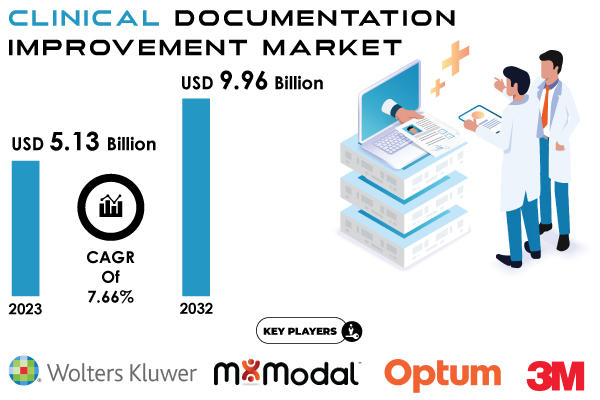BioCryst Presents New Real-World Evidence Showing High Adherence and Persistence Rates with ORLADEYO® (berotralstat)
Additional real-world studies show sustained HAE attack rate reduction after initiating ORLADEYO, regardless of C1-INH status, and patient preference for an oral LTP therapy
RESEARCH TRIANGLE PARK, N.C., Oct. 24, 2024 (GLOBE NEWSWIRE) — BioCryst Pharmaceuticals, Inc. (Nasdaq: BCRX) today announced new real-world comparative research on the use of oral, once-daily ORLADEYO® (berotralstat) that found high rates of adherence and persistence for ORLADEYO, similar to the rates observed with two other long-term prophylactic (LTP) therapies for hereditary angioedema (HAE).
The company also announced new real-world evidence showing statistically significant and sustained HAE attack rate reductions after initiating ORLADEYO in patients with HAE, regardless of their C1-inhibitor (C1-INH) deficiency status, and new findings from an HAE patient survey confirming patient preference for an oral LTP therapy.
“These results build on previous research that highlights how the real-world effectiveness and convenience of our oral, once-daily prophylactic therapy are differentiators for patients. The strong adherence, persistence and preference for ORLADEYO we report here provide further evidence that enables physicians to optimize individualized treatment recommendations for each of their patients. We continue to generate real-world evidence demonstrating that ORLADEYO is a powerful, potentially life-changing treatment for many people with HAE,” said Dr. Donald S. Fong, chief medical officer of BioCryst.
The data are being presented at the Annual Scientific Meeting of the American College of Allergy, Asthma & Immunology (ACAAI), which is taking place in Boston from October 24-28, 2024.
High Adherence and Persistence Rates for ORLADEYO and Other LTP Therapies
Poster #R072 explores adherence and persistence rates among patients with HAE following initiation of ORLADEYO (n=90) compared with lanadelumab (n=189) and subcutaneous plasma-derived C1-inhibitor (SC-pdC1-INH) (n=78).
“Our findings reveal that among HAE patients managed with LTP, high adherence and persistence rates were demonstrated for ORLADEYO. There was a striking consistency between first line therapies with comparable results for lanadelumab and SC-pdC1-INH. ORLADEYO rates were equivalent to – and in some cases better than – these LTP counterparts. The outcomes of our study provide further support for a shared decision-making approach within the physician-patient partnership to inform LTP selection, incorporating effectiveness, safety, treatment burden and patient preference for each individual,” said Sandra Christiansen, MD, professor of medicine and director of translational research at the US HAEA Angioedema Center at the University of California, San Diego.
- Adherence And Persistence Among Hereditary Angioedema Patients Treated With Berotralstat, Lanadelumab, And Subcutaneous Plasma-Derived C1-Inhibitor; ePoster #R072; Friday, October 25, 2:30-2:45 p.m. ET; Monitor #19, Hall A
- Eighty-six percent of patients who took ORLADEYO (n=77), 91 percent who took lanadelumab (n=172) and 83 percent who took SC-pdC1-INH (n=65) filled at least two prescriptions during the 12-month follow-up period.
- Adherence rates among patients with at least two fills were high at 12 months of follow-up. Seventy-seven percent of patients taking ORLADEYO were adherent compared to 76 percent of patients taking lanadelumab and 80 percent of patients taking SC-pdC1-INH.
- Persistence rates among patients with at least two fills were high at 12 months of follow-up, with 71 percent of patients taking ORLADEYO persistent compared to 63 percent of patients taking lanadelumab and 63 percent of patients taking SC-pdC1-INH.
- No statistically significant differences in adherence or persistence were observed between the LTP patient cohorts.
Methods
- Electronic health records linked to claims data were used to select mutually exclusive cohorts of patients aged 12 and above who initiated ORLADEYO, lanadelumab or pdC1-INH between June 22, 2017, and September 12, 2023.
- Adherence was defined as having a proportion of days covered greater than or equal to 0.80.
- Persistence was defined as fewer than 45 consecutive days without the index LTP treatment.
Sustained HAE Attack Rate Reduction After Beginning ORLADEYO Regardless of C1-INH Status
Posters #R092 and #R093 evaluate self-reported HAE attacks prior to and following ORLADEYO initiation among patients with and without HAE with C1-inhibitor deficiency (HAE-nl-C1-INH), respectively.
“ORLADEYO was associated with statistically significant and sustained reductions in attack rates through 18 months (540 days) following ORLADEYO initiation, regardless of patients’ C1-INH status. Importantly, in this real-world study, patients with zero attacks at baseline were included, compared to the minimum of two attacks that was required at baseline in APeX-2. These data confirm that many already well-controlled HAE patients enjoy continued or improved attack control once they initiate ORLADEYO,” Dr. Fong added.
- Sustained Real-World Attack Reductions Following Berotralstat Initiation Among Patients with Hereditary Angioedema with C1-Inhibitor Deficiency; ePoster #R092; Friday, October 25, 3:30-3:45 p.m. ET; Monitor #20, Hall A
- Patients (n=466) had significantly lower attack rates at each follow-up interval, which ranged from 0.62 attacks per month at days 361-450 (n=185) to 0.79 at days 271-360 (n=217) versus baseline (2.62 at days 361-450 to 2.50 at days 271-360).
- Mean monthly attack rate reduction was -1.71 (p<0.05) at days 271-360 (n=217) and -1.96 (p<0.05) at days 451-540 (n=157).
- Sustained Real-World Attack Reductions Following Berotralstat Initiation Among Patients with Hereditary Angioedema without C1-Inhibitor Deficiency; ePoster #R093; Friday, October 25, 3:45-4:00 p.m. ET; Monitor #20, Hall A
- Patients (n=353) had significantly lower attack rates at each follow-up interval, which ranged from 1.63 attacks per month at days 181-270 (n=191) to 2.04 at days 1-90 (n=304) versus baseline (4.33 at days 181-270 to 4.63 at days 1-90).
- Mean monthly attack rate reduction was -2.91 (p<0.05) at days 271-360 (n=157) and -2.53 (p<0.05) at days 451-540 (n=108).
Methods
- Outcomes were collected through BioCryst’s sole-source pharmacy and included U.S. patients who actively received ORLADEYO 110 or 150 mg QD from December 15, 2020, to January 8, 2024.
- Patient-reported HAE attack rates were collected at baseline and each refill (approximately every 30 days).
- To be included in the analysis of a given follow-up period, patients were required to have responded to a follow-up assessment within the period of interest and to the onboarding self-assessment of attacks. Approximately 96 percent of patients met these criteria at each interval.
Patients with HAE Prefer Oral LTP
Poster #R081 examines the LTP treatment preferences of patients with HAE, as collected through an online survey.
“We are encouraged to see both effectiveness and convenience are drivers of treatment preference with patients preferring oral therapy over injectable therapy when efficacy is assumed equal. Given the benefits of treatment with ORLADEYO for patients who remain on therapy over the long term, we believe we will continue to see the preference towards oral therapy reflected in the strong commercial performance of our oral, once-daily prophylactic therapy for HAE,” Dr. Fong noted.
- Long-Term Prophylactic Treatment Preferences of Patients With Hereditary Angioedema; ePoster #R081; Friday, October 25, 4:45-5:00 p.m. ET; Monitor #19, Hall A
- LTP treatment attributes rated most important were effectiveness in attack prevention and effectiveness in reducing attack severity.
- When presented with the option of an equally effective oral or injectable LTP, 54 percent preferred an oral daily therapy over a biweekly or monthly subcutaneous injection.
- More than half (52 percent) preferred oral over injectable LTP as infrequently as every three months.
Methods
- Results from an online survey of U.S. patients with HAE who were at least 18 years of age, self-reported their diagnosis and were receiving an HAE treatment (LTP, on-demand or both) or had experienced at least one HAE attack in the preceding three months (n=150).
In addition to displaying in the exhibit hall at the noted times, ePosters are accessible online and on demand to registered attendees on ACAAI’s website.
About ORLADEYO® (berotralstat)
ORLADEYO® (berotralstat) is the first and only oral therapy designed specifically to prevent attacks of hereditary angioedema (HAE) in adult and pediatric patients 12 years and older. One capsule of ORLADEYO per day works to prevent HAE attacks by decreasing the activity of plasma kallikrein.
U.S. Indication and Important Safety Information
INDICATION
ORLADEYO® (berotralstat) is a plasma kallikrein inhibitor indicated for prophylaxis to prevent attacks of hereditary angioedema (HAE) in adults and pediatric patients 12 years and older.
Limitations of use
The safety and effectiveness of ORLADEYO for the treatment of acute HAE attacks have not been established. ORLADEYO should not be used for the treatment of acute HAE attacks. Additional doses or dosages of ORLADEYO higher than 150 mg once daily are not recommended due to the potential for QT prolongation.
IMPORTANT SAFETY INFORMATION
An increase in QT prolongation was observed at dosages higher than the recommended 150 mg once-daily dosage and was concentration dependent.
The most common adverse reactions (≥10% and higher than placebo) in patients receiving ORLADEYO were abdominal pain, vomiting, diarrhea, back pain, and gastroesophageal reflux disease.
A reduced dosage of 110 mg taken orally once daily with food is recommended in patients with moderate or severe hepatic impairment (Child-Pugh B or C).
Berotralstat is a substrate of P-glycoprotein (P-gp) and breast cancer resistance protein. P-gp inducers (eg, rifampin, St. John’s wort) may decrease berotralstat plasma concentration, leading to reduced efficacy of ORLADEYO. The use of P-gp inducers is not recommended with ORLADEYO.
ORLADEYO at a dose of 150 mg is a moderate inhibitor of CYP2D6 and CYP3A4. For concomitant medications with a narrow therapeutic index that are predominantly metabolized by CYP2D6 or CYP3A4, appropriate monitoring and dose titration is recommended. ORLADEYO at a dose of 300 mg is a P-gp inhibitor. Appropriate monitoring and dose titration is recommended for P-gp substrates (eg, digoxin) when coadministering with ORLADEYO.
The safety and effectiveness of ORLADEYO in pediatric patients <12 years of age have not been established.
There are insufficient data available to inform drug-related risks with ORLADEYO use in pregnancy. There are no data on the presence of berotralstat in human milk, its effects on the breastfed infant, or its effects on milk production.
To report SUSPECTED ADVERSE REACTIONS, contact BioCryst Pharmaceuticals, Inc. at 1-833-633-2279 or FDA at 1-800-FDA-1088 or www.fda.gov/medwatch.
Please see full Prescribing Information.
About BioCryst Pharmaceuticals
BioCryst Pharmaceuticals is a global biotechnology company with a deep commitment to improving the lives of people living with complement-mediated and other rare diseases. BioCryst leverages its expertise in structure-guided drug design to develop first-in-class or best-in-class oral small-molecule and protein therapeutics to target difficult-to-treat diseases. BioCryst has commercialized ORLADEYO® (berotralstat), the first oral, once-daily plasma kallikrein inhibitor, and is advancing a pipeline of small-molecule and protein therapies. For more information, please visit www.biocryst.com or follow us on LinkedIn.
Forward-Looking Statements
This press release contains forward-looking statements, including statements regarding future results, performance or achievements and statements relating to ORLADEYO performance and patient preferences. These statements involve known and unknown risks, uncertainties and other factors which may cause actual results, performance or achievements to be materially different from any future results, performance or achievements expressed or implied by the forward-looking statements. These statements reflect our current views with respect to future events and are based on assumptions and are subject to risks and uncertainties. Given these uncertainties, you should not place undue reliance on these forward-looking statements. Some of the factors that could affect the forward-looking statements contained herein include: BioCryst’s ability to successfully implement or maintain its commercialization plans for ORLADEYO, which could take longer or be more expensive than planned; the commercial viability of ORLADEYO, including its ability to achieve sustained market acceptance; the FDA or other applicable regulatory agency may require additional studies beyond the studies planned for products and product candidates, may not provide regulatory clearances which may result in delay of planned clinical trials, may impose certain restrictions, warnings, or other requirements on products and product candidates, may impose a clinical hold with respect to product candidates, or may withhold, delay, or withdraw market approval for products and product candidates; BioCryst’s ability to successfully manage its growth and compete effectively; and risks related to the international expansion of BioCryst’s business. Please refer to the documents BioCryst files periodically with the Securities and Exchange Commission, specifically BioCryst’s most recent Annual Report on Form 10-K, Quarterly Reports on Form 10-Q, and Current Reports on Form 8-K, which identify important factors that could cause the actual results to differ materially from those contained in BioCryst’s forward-looking statements.
BCRXW
Contact:
John Bluth
+1 919 859 7910
jbluth@biocryst.com


















